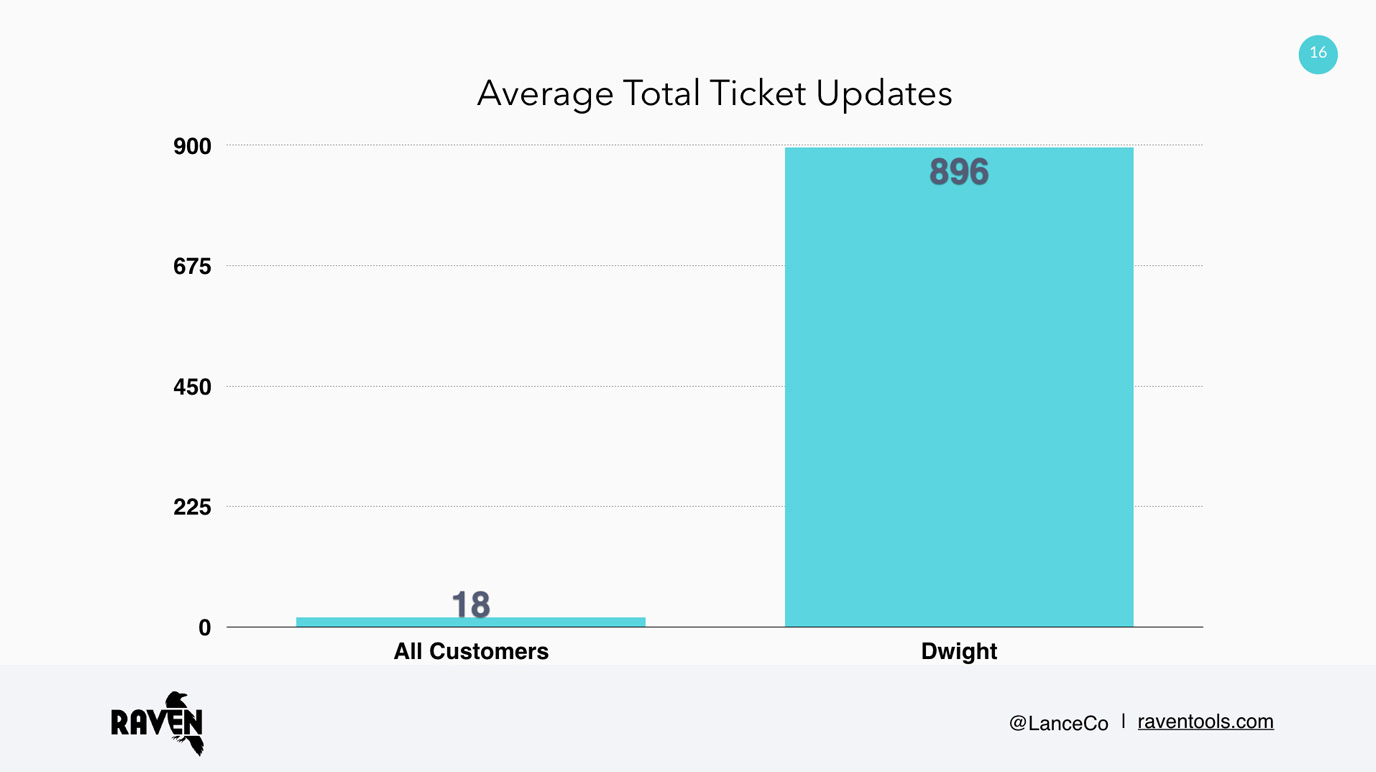Conversations
When you have
an abusive customer
Everyone has had an abusive customer before. They might even be a similar (or the same!) person to your repeat emailer from earlier on. But that doesn’t mean that your support team or company deserves to deal with them, and you most certainly should feel enabled to “break up” with them, if what they are saying to you becomes abusive or problematic.
Lance of Raven Tools has a great example of this with his customer Dwight. Dwight would send in emails like this to Lance’s team:
“Tell me, what am i actually paying for! At least your company is consistent in it’s failures to provide anything close to acceptable levels
of service!”
While this email seems pretty harmless, eventually Lance realized that the volume of tickets with a similar, or even more aggressive, tone coming from this one customer was increasing, as were the level of threats contained within them. So, they determined that Dwight should be fired. There are a few reasons that you should consider firing a customer for:
- They are verbally abusing you or making you feel unsafe.
- They are threatening you or your team, either personally or professionally. These threats can even include threats of chargebacks for fraud or contacting your leadership team.
- A history of bad behavior with no indication of change.
Dwight met all of these criteria and more: he had sent numerous emails with increasingly aggressive language. He had started threatening individuals on the team, and he had done so consistently for a long time, despite Lance and other team members attempting to coach him out of it. It was time for him to go.
After you’ve decided to let someone go, it’s time to get leadership involved. You’ll need to have documentation of your cause and be able to prove to them that it is important and financially viable to make this decision. In Lance’s case, that was easy:

The last step, once you have buy-in from the people in charge, is to actually take action.
In this case, we’d recommend involving a manager or someone with slightly more tenure to write
the ticket, as their title may serve to assuage some of the customer’s concern. From there, the
response might look like:
Hi there Dwight,
My name is [name] and I am head of support here at [company]. I recognize that my reaching out to you like this might come as a surprise, so I wanted to explain that we’ve decided that you aren’t the best fit for [company] any longer. While we really appreciate the [amount of time] that you’ve spent with us, we’ve seen a number of incidents from you aggressing our support staff as well as sending in a [large number] of tickets for a relatively small number of incidents. Here are some examples of language you’ve used that we deem inappropriate:
- [example]
- [example]
- [example]
We’ve canceled your account effective of the end of the week, and have issued you a [number of months] refund to your card on file.
Please let me know if you have any questions about this, but otherwise thank you again for being a customer with us, and we wish you the best of luck moving forward elsewhere.
Thanks!
This keeps everything very clear in regards to reasoning: the customer understands exactly why and what is happening, and also what action is being taken. There is nothing left up to imagination or question, but the response is still courteous. Offering a refund is very important, in this case, as it helps the customer understand, as Lance puts it, that this is a business transaction and not a personal offense.